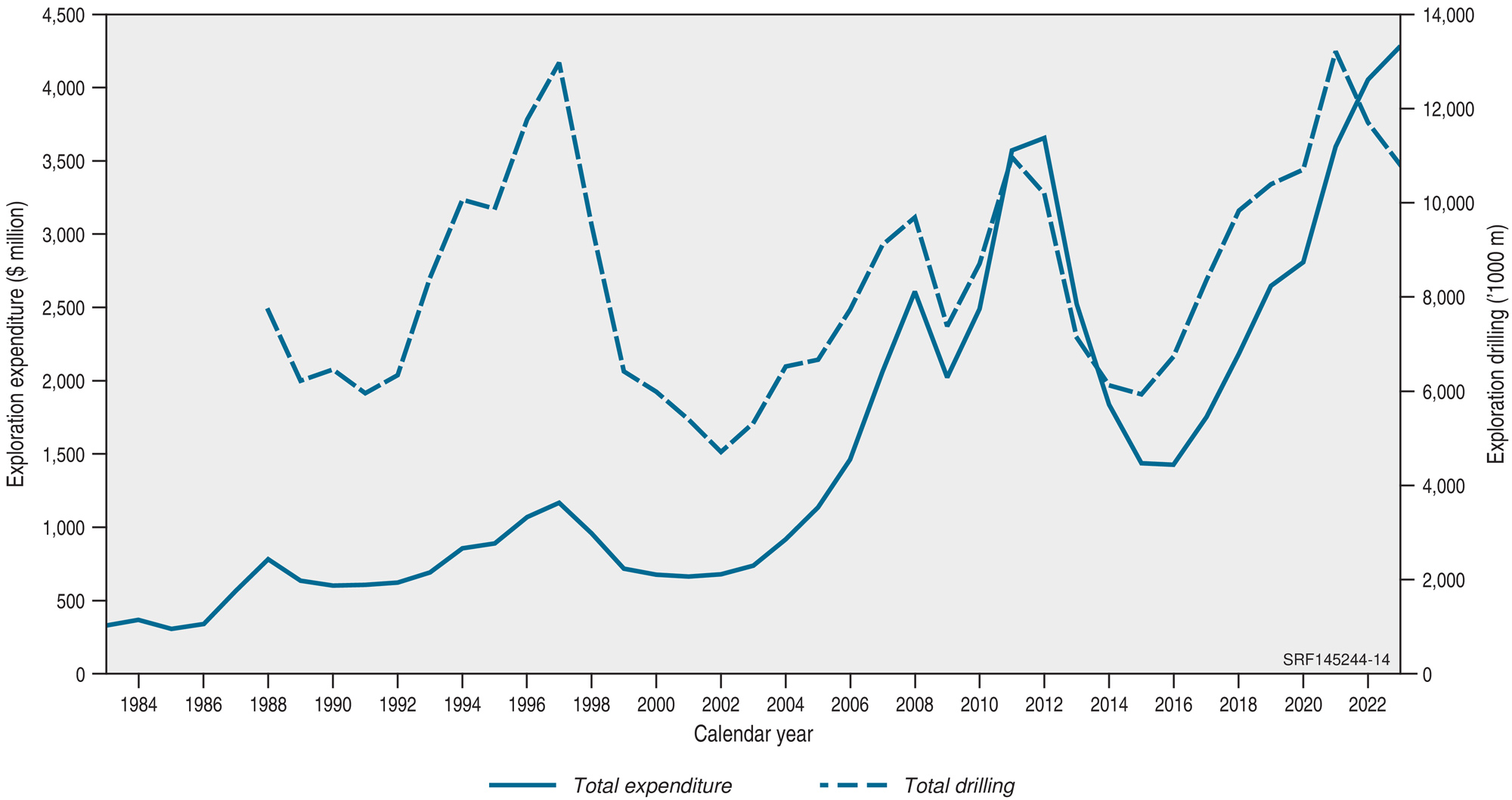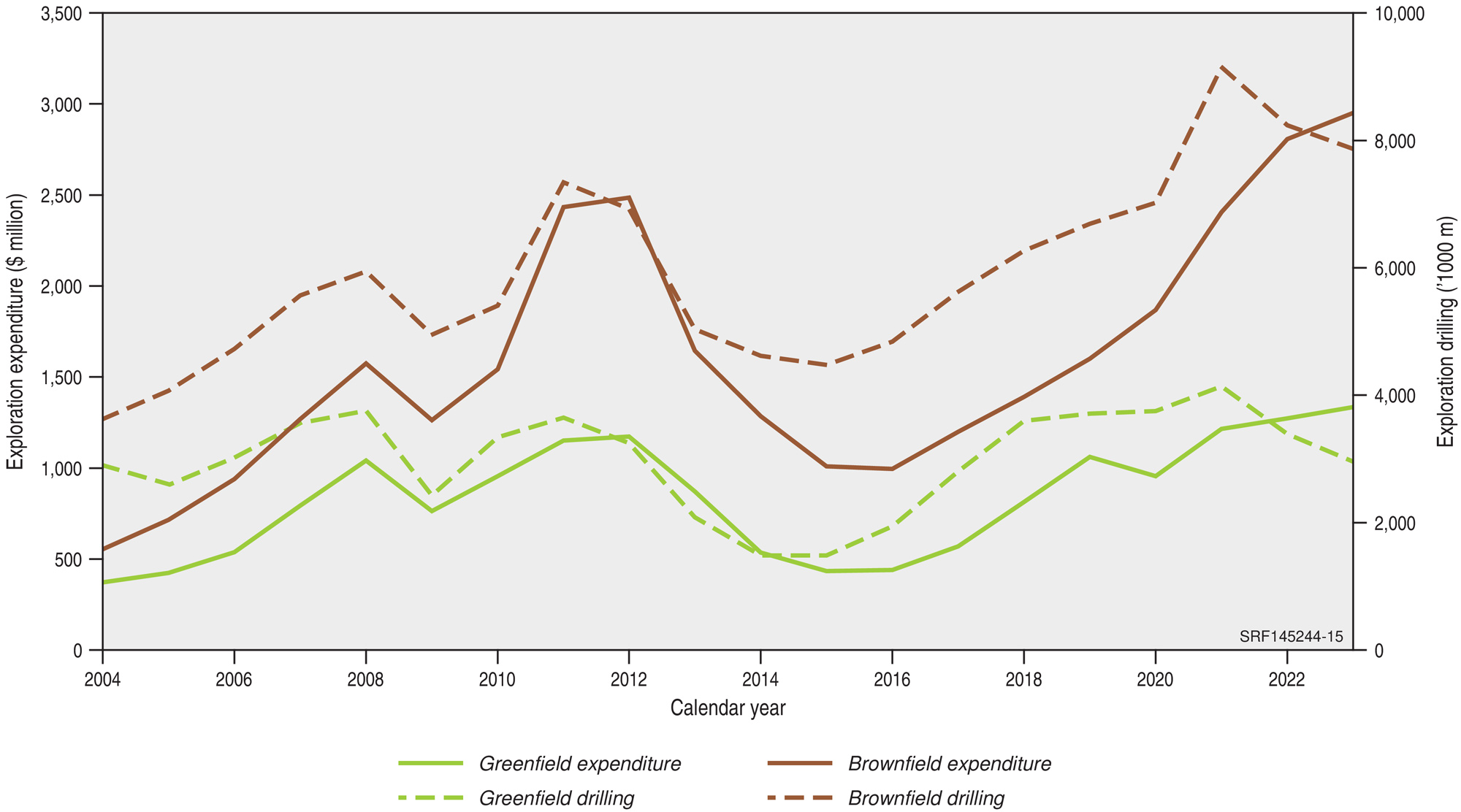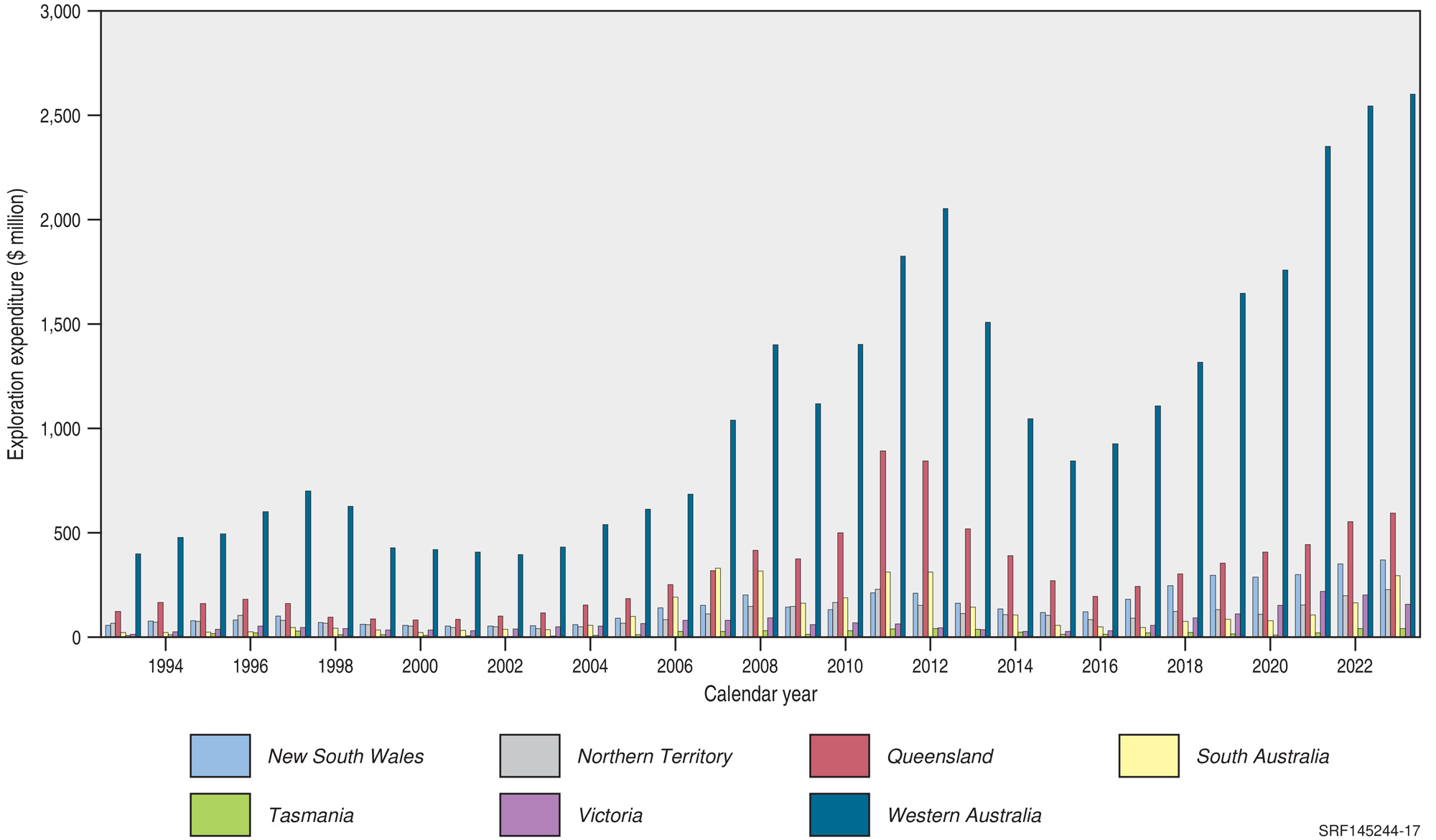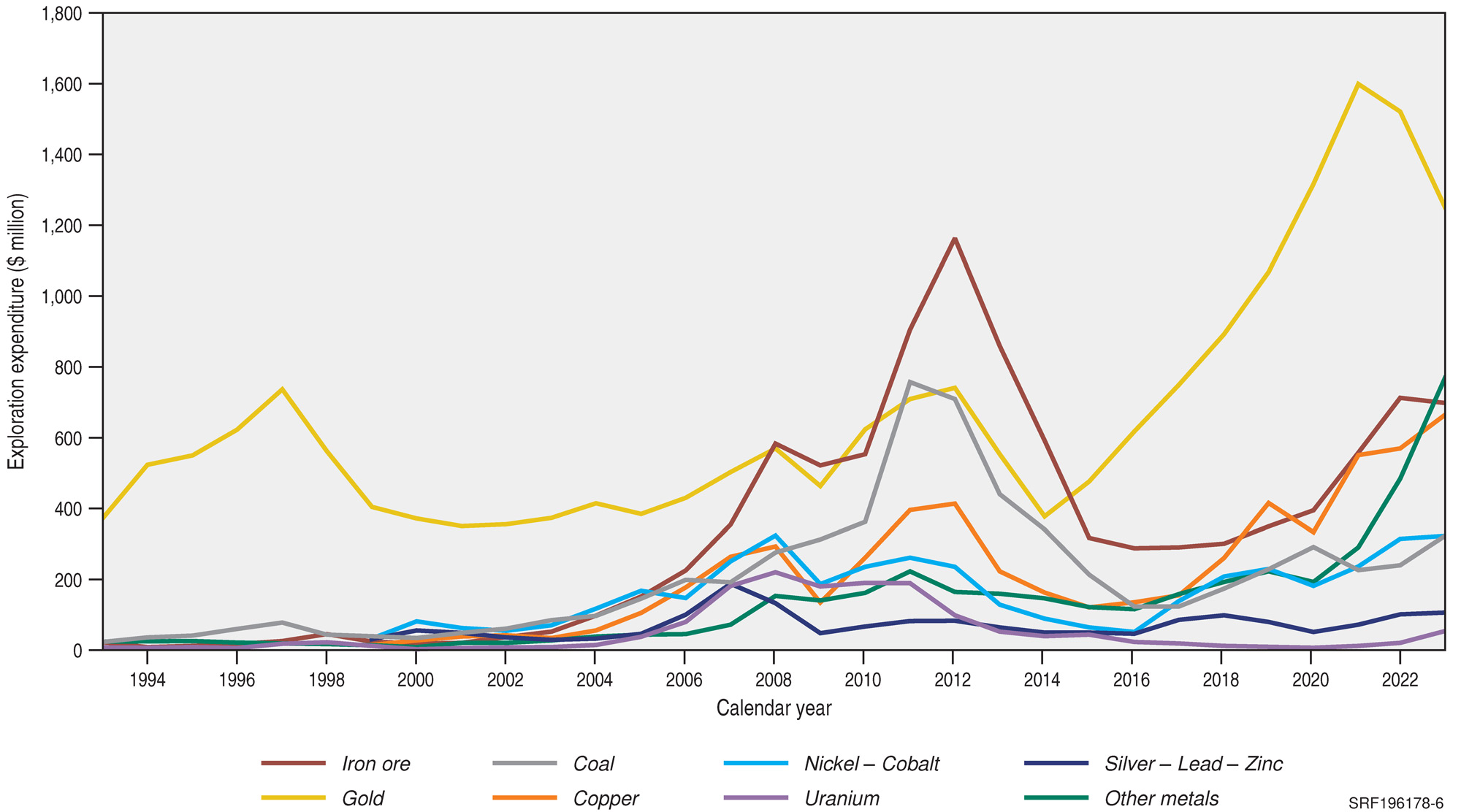Australia's Identified Mineral Resources 2024 Mineral Exploration
Page last updated:27 February 2025
Mineral Exploration
Relatively high commodity prices for many minerals in 2023 (e.g. gold, silver, uranium and zinc) continued to stimulate mineral exploration across Australia. This was buoyed by ongoing interest in critical minerals and strategic materials such as cobalt, nickel and copper. Quarterly reports on mineral exploration data published by the Australian Bureau of Statistics13 show higher exploration expenditure throughout most of Australia. Total mineral exploration expenditure for the 2023 calendar year was up 5% to $4,270 million compared to $4,060 million in 2022 (Figure 3).
In the search for new mineral deposits, exploration expenditure in greenfield tenements was up 5% from $1,269 million in 2022 to $1,330 million in 2023, despite a 14% fall in metres drilled from 3,436,100 m in 2022 to 2,960,300 m in 2023 (Figure 4). Likewise, exploration expenditure around existing deposits (brownfield) was up 5% to $2,940 million in 2023 compared to $2,791 million in 2022 and metres drilled also fell, by 5% to 7,872,600 m from 8,248,400 m in 2022 (Figure 4).
In 2023, exploration expenditure was at the highest levels ever recorded in New South Wales (up 5% to $367 million), South Australia (up 78% to $293 million) and Western Australia (up 2% to $2,599 million; Figure 5). Western Australia accounted for 61% of national exploration expenditure in 2023, followed by Queensland with 14% ($592 million) and New South Wales with 9% ($367 million).
Gold remained the most explored for commodity in 2023, accounting for 29% of all mineral exploration expenditure (Figure 6). The category of ‘other metals’, which includes many critical minerals, attracted the next largest exploration expenditure in 2023, up 58% to $767 million from $487 million in 2022, followed by iron ore, down 2% to $700 million from $715 million in 2022 (Figure 6).
The growing momentum for new sources of raw materials saw copper exploration expenditure increase by 17%, from $571 million to $667 million in 2023, buoyed by an ongoing interest in expanded electricity distribution networks for energy security. Diamond exploration expenditure increased by 67% to $4.5 million, up from $2.2 million in 202214. The only commodities that saw a decline in exploration expenditure were gold, down 18% from $1,525 million in 2022 to $1,250 million in 2023, and iron ore, slightly down by 2% from $715 million in 2022 to $700 million in 2023.
In 2022, flooding on Australia’s east coast created supply limitations for some commodities and contributed to inflationary pressures, as did Russia’s invasion of Ukraine, which resulted in substantial energy price rises in many parts of the world. In 2023, as Australian suppliers recovered from flood damage, thermal coal prices fell from $381/t in 2022 to $233/t in 2023, metallurgical coal prices fell from $454/t in 2022 to $368/t in 2023. An expected increase in demand for energy, along with increasing climate change concerns, stimulated increased interest in nuclear energy globally as a source of reliable carbon-free electricity. This interest saw exploration spending for uranium in Australia increase by 148% to $55 million, up from $22 million in 2022.
13 ABS, Quarterly Statistics, Mineral and Petroleum Exploration March 2024 (accessed 15 March 2024).
14 Ibid.



